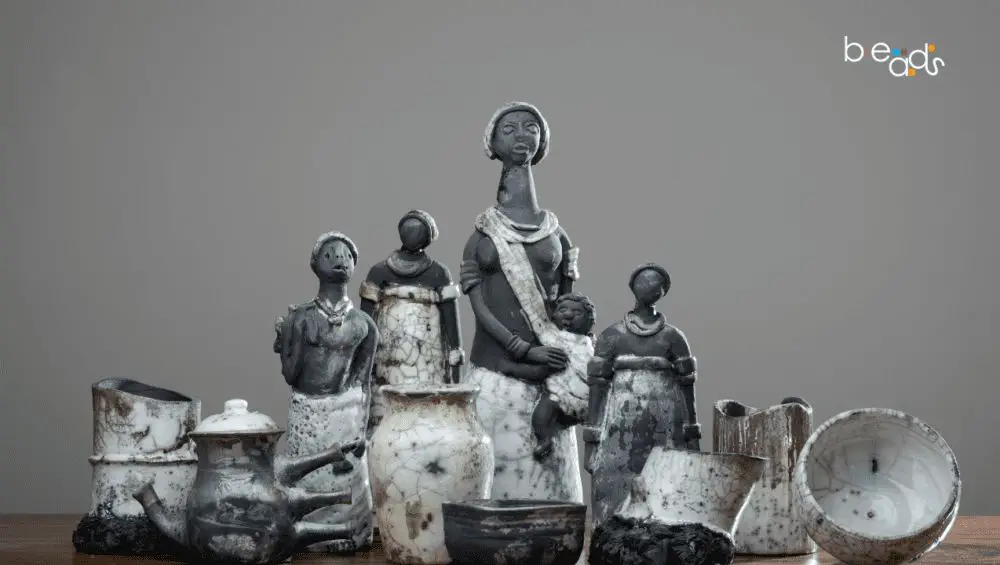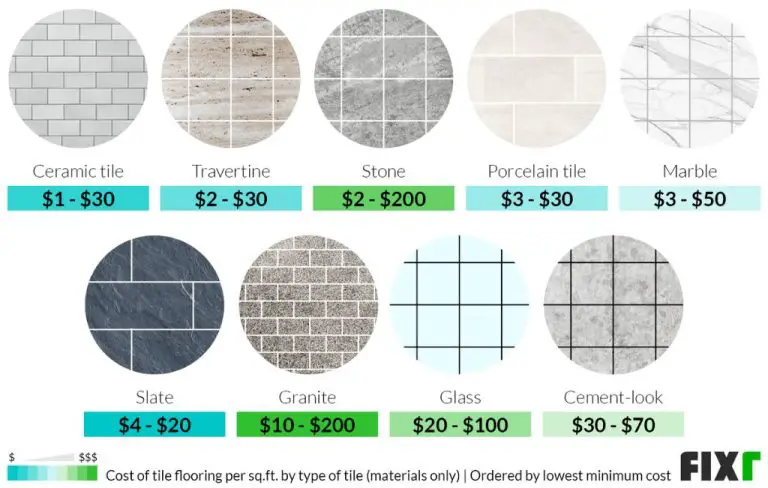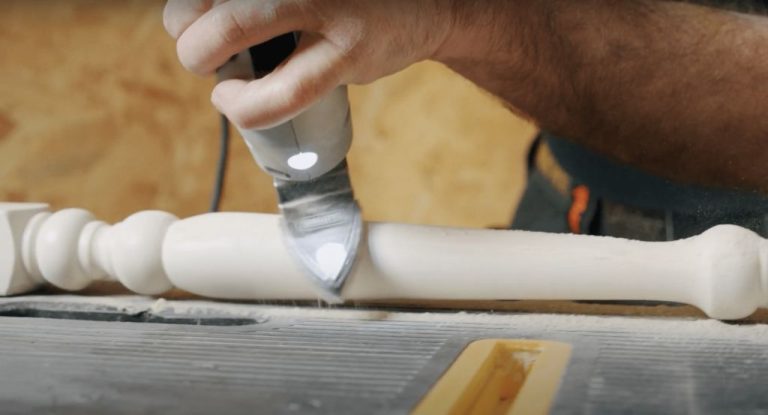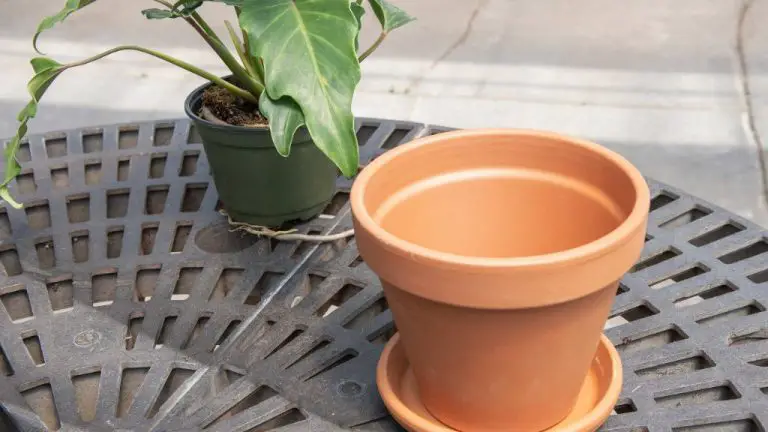What Is A Raku Firing?
What is Raku?
Raku is a low-fired ceramic technique that originated in 16th century Japan and involves removing pottery from the kiln while it is still glowing hot and placing it into containers with combustible materials to create unique patterns and colors on the surface (RAAQUU Koban 7 inch Raku Ceramic Pottery Vase). The name “raku” comes from the name of the Japanese potter, Raku Chōjirō, who developed this technique under the patronage of Japanese tea master Sen no Rikyu (Raku Firing – the past and the present of the incredible Japanese ceramics technique).
The purpose of raku firing is to create one-of-a-kind pieces with spontaneity and serendipitous effects by exposing the ware to extreme temperature changes. This gives each raku piece its own distinct personality (Dokutsu Ceramic Raku Vase – RAAQUU Basics Handmade Pottery Home Decor). The philosophy behind raku is about embracing imperfection and appreciating transient beauty. Raku pottery is often used in Japanese tea ceremonies which reflect Buddhist principles of humility and acceptance (History-Birth of Raku ware).
Raku Clay Body
Raku clay requires a special formula to withstand the quick heating and cooling of the raku firing process. The clay body needs excellent thermal shock resistance to prevent cracking and breaking.
A typical raku clay contains fireclay, ball clay, grog, and talc. Fireclays are refractory clays that can withstand high temperatures, providing stability in raku firing. Ball clays improve plasticity and bonding. Grog, which is pre-fired clay ground into coarse particles, gives the clay thermal shock resistance. Talc can also be added to enhance thermal shock properties.
For example, a common raku clay body contains 32% fire clay, 22% ball clay, 20% talc, and 13% medium grog (Raku Body Recipe). This combination yields a clay with the strength, plasticity, and thermal shock resistance ideal for raku.
Creating Raku Pieces
Raku pottery is typically created through common methods like handbuilding and wheel throwing. Handbuilding techniques like pinch pots, coils, and slabs allow artists to create sculptural forms in raku clay. While wheel throwing enables symmetrical shapes like bowls, vases, bottles, and teapots (source).
Some of the most common forms created for raku firing include:
- Bowls – Raku bowls often feature freeform shapes and textures made by hand. The bowls can be left unglazed showing the bare clay.
- Vases – Tall, narrow vases are frequently seen in raku. They provide ample surface area for abstract patterns and designs.
- Teapots – Raku teapots range from functional to sculptural. Textural effects are added to make each one unique.
Raku artists also use the clay to create more sculptural and artistic pieces like masks, figures, and wall hangings. The raku firing process allows each piece to have its own distinctive look and feel (source).
Bisque Firing
Raku pieces need an initial bisque firing at a lower temperature before the final raku firing. According to The Pottery Wheel, the recommended bisque temperature for raku is around 1852F or 1010C [1]. The bisque firing is done at a lower temperature to allow any moisture in the clay to fully escape before the raku firing. If moisture was still present during the raku firing, which reaches higher temperatures very quickly, the rapid heating could cause dangerous steaming and cracks in the clay body [2].
Glazing
Raku glazes have special properties compared to other pottery glazes. They are formulated to have very high thermal expansion, allowing the glaze to crackle and craze when heated and cooled rapidly during raku firing. This exposes the bare clay underneath, creating interesting textural effects.
Common ingredients in raku glazes include copper carbonate, red iron oxide, cobalt carbonate, and titanium dioxide, which produce colors like metallic copper, red, blue, and white. Popular recipes like Hasselle Red and Bronze raku glaze utilize these materials to achieve vivid results. According to the Ceramic Arts Network, a basic raku glaze consists of “20% calcium carbonate, 35% nepheline syenite, 35% silica and 10% metal oxides for color” (Source).
Glazes are applied to greenware or bisque pots by dipping, pouring, or brushing. Multiple layers and colors can be used for more complexity. Glazes should be applied thicker than functional glazes, usually around 1/8 inch thickness. With special raku glazes and methods, striking crackle patterns emerge after the raku firing.
Raku Firing
The raku firing process is what gives raku pottery its distinctive look. Raku ware is fired in a raku kiln, which can reach temperatures between 1,600-1,800°F. The pots are heated quickly, with firing times as short as 10-15 minutes. According to the Ceramic Arts Network, raku kilns allow potters to “make several firings in one day” compared to regular kilns which often take many hours or days for one firing.
Once the raku pottery has reached the desired temperature in the kiln, it is immediately removed while still red hot using long metal tongs. The pot is then placed in a reduction chamber, which is a container with combustible material such as sawdust or newspaper. The burning material removes oxygen from around the pot and creates carbon in the atmosphere. This reduction process is what gives raku glazes their distinctive crackled metallic look.

Raku glazes are specially formulated to crackle and craze when exposed to the quick changes in temperature and atmosphere. As Ceramic Arts Network explains, “What happens to the molecular structure of the glaze when the rapid heating, reduction, and cooling occur is that the glaze goes into thermal shock, so it shatters and breaks apart.” This cracked glaze effect is part of what makes raku pottery unique.
The raku firing process, with its quick firing, immediate reduction, and rapid cooling, is designed to produce pottery with raku’s signature look. It requires specialized kilns, glazes, and techniques to achieve the beautiful crackled finishes.
Sources:
https://ceramicartsnetwork.org/daily/article/Successful-Tips-and-Techniques-for-Raku-Firing
https://www.soulceramics.com/pages/raku-firing
Post-Firing Steps
After the raku firing ends, the pottery undergoes a rapid cooling or quenching process. This is an essential part of raku firings. There are several methods used for the quenching step:
Water Quenching – This involves removing the red-hot pottery from the kiln and immediately submerging it into water. The rapid cooling helps create cracks and crazing effects on the surface. Raku artists sometimes agitate the pottery in the water to increase cracking. Some also do multiple cycles of re-heating and water quenching to get more dramatic effects (Successful Tips and Techniques for Raku Firing).
Wet Newspaper or Materials Quenching – Instead of water, raku pieces can be buried into stacks of wet newspaper, sawdust, leaves, or other organic materials. These materials act as insulators and cool the pottery gradually. The carbon from the burnt materials can leave black sooty deposits on the pottery surface (What Is Raku Firing And How Does It Work?).
After quenching, raku pottery often undergoes final finishing steps. Artists may rub the surfaces with cloths or sandpaper to enhance crackle effects. Waxing and polishing can help highlight areas of black carbon deposits. Raku firings result in unique finished pieces with one-of-a-kind surface effects.
Characteristics of Raku
Raku ware is known for its distinctive aesthetic qualities that result from the raku firing process. Some of the defining characteristics of raku include:
Crackled glaze finishes – Raku glazes contain materials like silica and alumina that cause them to crackle and craze when cooled rapidly after firing. This creates a distinctive crackled surface texture on the ware.source
Metallic sheens from reduction firing – The reduction atmosphere during raku firing causes metallic compounds in the clay and glazes to come to the surface, creating beautiful iridescent metallic colors. Copper, iron, and other metals produce lustrous metallic sheens.
Rustic, organic, simple aesthetic – Raku ware typically has a rustic, handmade appearance, often with minimal decorations. The organic crackled glazes and earthy tones create a natural, imperfect look. Forms tend to be simple and geometric or rounded sculptural shapes.
Raku Artists
Raku pottery originated in 16th century Japan under the master potter Hon’ami Koetsu and his disciple Suzuki Osai. Koetsu is credited with developing the basic raku style and techniques that are still used today. He produced elegant, simple pieces often used in Japanese tea ceremonies. Suzuki Osai elevated raku further, producing works with a distinctive crackled glaze.
Some key raku artists through history include:
- Hon’ami Koetsu (1558–1637) – Founder of the raku style
- Suzuki Osai (1596–1664) – Koetsu’s disciple who refined raku techniques
- Suzuki Sōtan (1578-1658) – Known for black raku
- Suzuki Chōjirō (died 1858) – Revived the raku style in the 19th century
In the 20th century, raku gained global popularity. Famous contemporary raku artists include:
- Paul Soldner – American raku pioneer who popularized raku firing Stateside
- Takeshi Yasuda – Japanese ceramicist known for colorful sculptural works
- Steven Forbes-deSoule – Creates raku vessels and sculptures with natural themes https://stevenforbesdesoule.com/
Today raku remains an active area of ceramic art around the world, with new generations of artists bringing their own innovations to this historic technique.
Raku Community
Raku is a tradition passed down through apprenticeships and workshops. Experienced raku artists often hold retreats and workshops to teach others the techniques and rituals involved (https://choplet.com/ceramic-classes/raku-workshop). These intensive workshops allow participants to not just learn hands-on skills, but also bond over the meditative experience of raku firing (https://zmm.org/our-programs-2/663/being-the-bowl-a-clay-retreat-with-raku-firing/). The raku community values continuity and intimacy in the transference of knowledge from master to student.
The raku firing itself serves as a communal ritual for artists. As they take turns quickly removing glowing pots from the kiln and plunging them into combustible materials, artists experience an adrenaline rush and camaraderie. The intensity of raku brings people together. Many raku artists describe the firings as spiritual experiences that strengthen social bonds.
Overall, raku involves a tight-knit community of artists who value tradition, mentorship, and a meditative approach to creating pottery. The hands-on workshops and thrilling firing rituals form deep connections between raku practitioners across generations.




